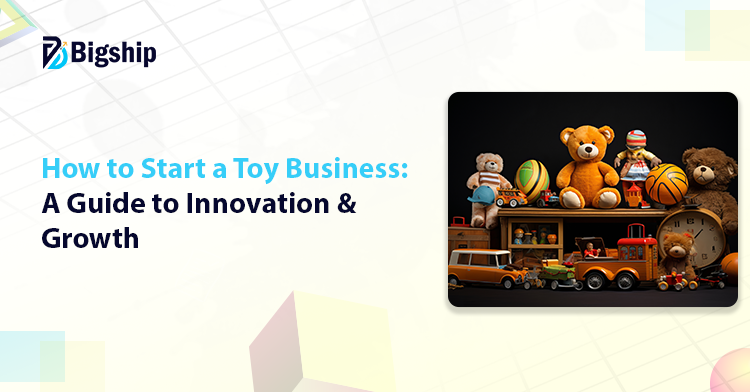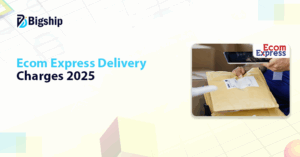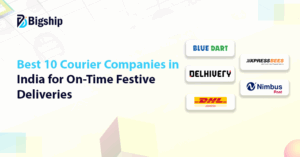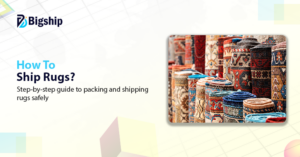The toy industry is no longer limited to just entertaining children, it’s a thriving, multibillion-dollar market facing growing global demand despite occasional shortages. With worldwide revenues expected to rise from USD 111.8 billion to USD 179.4 billion by 2025, there has never been a better time to turn a playful passion into a serious business. From handcrafted wooden toys and educational kits to tech-enabled interactive products, the opportunities are vast and evolving.

Success in the toy industry isn’t a matter of luck, it starts with a clear strategy and strong market insights. Consider this guide as your master plan, certainly. While dreaming big is essential, it’s equally important to understand industry trends, identify your target audience, and design products that win both hearts and market share.
Now that your imagination comes with a dash of strategy, let’s go through the steps that will make your toy business exciting, profitable, and long-lasting.
Understanding the Toy Market Landscape
The toy industry has undergone a remarkable transformation. It’s no longer just about dolls, cars, or action figures, it’s a dynamic, innovation-driven space shaped by modern parenting values, sustainability concerns, and technological breakthroughs.
An equally significant change lies in the surging demand for educational, STEM-inspired toys. Today’s parents want educational tools for their children’s growth, along with entertainment. Modern playrooms are now filled with toys that teach coding, encourage science experiments, and boost creative thinking through building and construction.
Consumers are leaning towards eco-friendly products as well. Toys made from wood, organic cotton, and recycled plastic are becoming popular as more people choose a greener lifestyle. From biodegradable packaging to handmade, non-toxic toys, eco-friendly options are growing fast.
Technology is transforming the idea of play. Smart toys, from AI companions to AR games merging the real and digital worlds, are capturing the imagination like never before, allowing for interactive experiences that foster creativity.
Steps to start your Toy Business
Here’s how you can start your toy business effortlessly.
1. Choosing Your Toy Business Niche
Let us zoom in on that perfect spot of yours in the toy market. Choosing the right niche is like choosing the right toy and it should be something that brings joy to your face, stands out, and can reach out to the audience.
Let’s suppose you are walking into a huge toy store with options everywhere. Overwhelming, isn’t it? That is exactly how shoppers feel even when he or she has to shop online. A defined niche sets you apart, simplifies marketing efforts, and encourages loyal customers who get crazy for offers.
Rather than competing with big brands, find a category where you can be ranked first. The clearer your positioning, the quicker your growth will be and the deeper the trust from your customers. Some of the toy niches are mentioned below:
- Educational Toys: Today’s parents look for more than just fun, they want toys that also help their children learn. Puzzles that stimulate the mind, science kits, and coding games that make learning exciting and interactive.
- Eco-Friendly Toys: A strong comeback is being made by these sustainable classics. Known for their durability and natural charm, they capture the imagination of families who wish for plastic-free play.
- Sensory Toys: Sensory toys support kids with sensory needs in sight, sound, and touch, fostering development.
- Collectible Toys: Collectibles ranging from action heroes to limited-edition plushies come with their built-in fanbase.
- Smart and Tech-Enabled Toys: This is where innovation transforms play. Think of robots that teach coding, interactive pets, and engaging digital toys that make learning fun.
2. Bringing Your Toy Idea to Life
After spotting your niche, prepare to make your idea real. This phase is where creativity meets execution, and your dream toy starts taking form. Here’s how you approach step by step:
- Ideation & Concept: Begin with sketches, mood boards, and wild ideas. You can think of what makes your toy fun, unique, or meaningful. There have been countless toys, all coming from very basic ideas with a creative twist.
- Prototype & Feedback: Make early sketches with any available materials or go with a 3D print of a cool iteration and test with actual users. Kids and their parents make superb critics. Use their feedback to improve the design in terms of usability, safety, and interest.
- Manufacturing: This is a key decision. The very first question that arises is should you produce the toys yourself or outsource the work? Many sellers choose to source from China to reduce costs. However, it’s important to ensure your supplier follows quality standards and delivers on time.
- Packaging & Branding: The first sales pitch is packaging. So make it stand out always. Bold colors, storytelling, and the design elements that express the vibe of your brand and appeal to your customers would be perfect.
The idea of differentiation remains key in the crowded toy market. Whether your toy is fostering STEM education or is made sustainably
And keep safety in mind, especially if you plan to stay in India. Your toys should comply with all BIS safety standards (IS 9873) and mark the ISI mark as per the provisions of the Toys Quality Control Order (QCO), 2020. These standards cover everything from the materials used and labeling to mechanical safety and flammability.
If you stay within the law and make sure of quality, you will start building a toy brand that kids (and parents) will trust.
3. Choosing the Right Sales Channels
Choosing the right sales channels is like selecting the perfect stage for toy performances, visibility, accessibility, and an audience capable of appreciating the act, really must be considered. Going offline, online, or a bit of both depends on one’s objectives, budget, and perception of how customers may experience their brand.
Offline Toy Stores
- Pros: Children see, touch, and play before they make a purchase. Real relationships and trust can be built with customers.
- Cons: High rent and staff maintenance, also limited exposure to only that location.
Online Stores
- Pros: Selling all day, all night; reaching a local, national, or international audience; resorting to data; low overhead can be great for startups.
- Cons: No touch and feel for the toys, more competition, and digital marketing has become a mandatory expense if you want to have your advertising on top.
Selling in Marketplaces
- Amazon: Selling on Amazon will provide you with tremendous reach, FBA to support logistics, but high competition and seller fees. It can be best used by volume sellers.
- Flipkart: Major player in India’s e-commerce arena, suitable for moderate-price toys and creative items.
- eBay: Great for collectors, for vintage toys, niche items, and international audiences.
4. Making Your Online Store
You can create a store that belongs to you through Shopify or WooCommerce. Customize the layout, design, and experience to reflect your brand. But remember that you need to invest in SEO, ads, and social media channels to generate traffic.
5. Marketing Your Toy Business the Smart Way
Your brand is pretty much the soul of your toy business, it tells the world who you are and what your toys stand for. Whether your style is fun and imaginative or serious and intellectual, begin by finding a brand name and logo that represent your identity clearly and connect with your viewers. Make a stand, something easy to recall, that truly represents your niche of choice.
- Strengthen Your Digital Footprint: Visibility is paramount in the present digital-first world. Platforms such as Instagram, Facebook, and Pinterest do very well for displaying your toys. Share elegant photos and engaging videos, and hold giveaways to create some noise around your brand. Let social media platforms like Instagram be a sandbox for your brand.
- Content Adds Value: Want to earn trust? Collaborate with some education and entertainment for your audience. Share blog posts or short videos that speak about choosing age-appropriate toys, creative play ideas, or parent hacks. Providing solutions through these articles will make your brand a first go-to reference rather than merely a product.
- Scale Through Paid Marketing: If budget permits, run paid ads on Google or social media. They allow you to target parents, educators, or niche collectors with great granularity. You can start with small campaigns, monitor what works, and scale up once you see results.
6. Managing Your Toy Business
Once your toy business starts, the second thing that you must focus on is the task of keeping things running smoothly. Think of your operations like a well-tuned toy factory, every moving part needs to work in sync so customers get their orders on time and in perfect condition. It’s fun, but it needs your strategy and systems.
- Inventory Management: Stock needs to be tracked. What is in, what sells fast, and what needs to be restocked? Too much stock would tie your capital down; too little would lose sales. Use systems that help keep stock levels, raise alerts automatically, and ensure that all of your bestsellers are ready for shipping.
- Order Fulfillment & Shipping: Now is the time for the orders to be fulfilled. It should be carried out swiftly and error-free—from order picking, packing, label printing to courier scheduling. Partner with trusted courier companies and consider installing automated tools that can improve efficiency and reduce delays.
- Customer Support Matters: The best products draw the crowd, and great customer service keeps them around. Be prompt, polite, and helpful. Respond to queries, address problems efficiently, and do just a bit more. Happy customers become repeat buyers and your best brand ambassadors.
7. Scaling Your Toy Business
Now that your toy business is functional, it is time to think bigger. Scaling, indeed, is not merely selling more. You want to build a brand for life, reach new clients, and add creativity to product development accordingly.
Do not place your bets on just one type of toy. Consider related lines of products that complement your brand. If you opened a business with STEM kits, surely hands-on craft boxes, tech toys, or even outdoor playsets will be great additions. Customer feedback as well as market trends should be instrumental in your decision-making.
Here lies the world of opportunity. Look at new regions or demographics for an expansion plot. Maybe your eco-toys would attract buyers all over the globe, or your educational products might be just right for international schools.
With growth comes collaboration. Work with brands, companies, or organizations that share your values or customers, whether those are schools, bookstores, learning apps, or local toy stores.
How Bigship is the right choice for Toy Shipment
When it comes to toy shipping, Bigship is the right logistics partner that will make your business go across India. Whether you’re delivering handcrafted wooden toys or advance gadgets, parents expect speed, safety, and reliability. Bigship gives you-
- Fast & Reliable Deliveries – Toys are often purchased as gifts or for special occasions. Bigship ensures on-time delivery across India, so that your customers never left waiting.
- Real-Time Tracking & Transparency – With Bigship, both you and your customers can track orders in real-time, ensuring complete peace of mind with every shipment.
- Multiple Courier Options – Bigship’s suggests the best courier based on delivery speed, cost, and location, giving you full control and flexibility over your logistics.
- Secure Packaging & Damage Control – Toys are fragile, and damaged deliveries hurt your reputation. Bigship ensures reliable handling with experienced courier tie-ups and protective packaging suggestions.
- Affordable Shipping Rates – From single-piece shipments to bulk toy consignments, Bigship offers competitive pricing with no hidden charges, ideal for startups and growing toy brands.
Conclusion
Toy manufacturing is a thrilling mixture of creativity and strategy-that is, if the business sustains growth. A solid execution plan, wise partners, and smooth logistics are what keep this business growing. Whether you are building and marketing hand-crafted, eco-friendly toys or striving to create the next big tech-enabled plaything, your program-to-customer series will have to operate quickly, reliably, and efficiently. This is where Bigship gets involved in trusted logistics.
One of Bigship’s integrated shipping solutions supports marketplace integration and real-time tracking to ensure that your toy business reaches every door while developing trust for every delivery. In an environment where customer experience is as important as creativity, with Bigship, it will help you realize playful ideas into profitable and scalable businesses.
Sign up with Bigship and make logistics for your toy business smooth and efficient!





